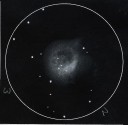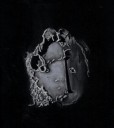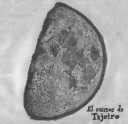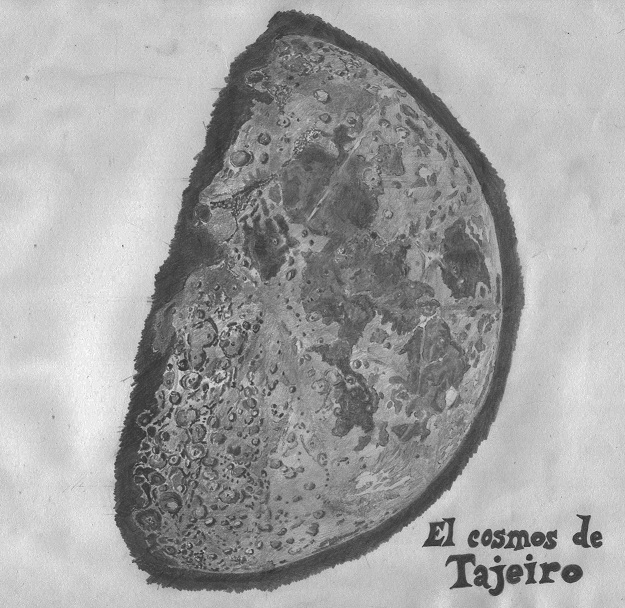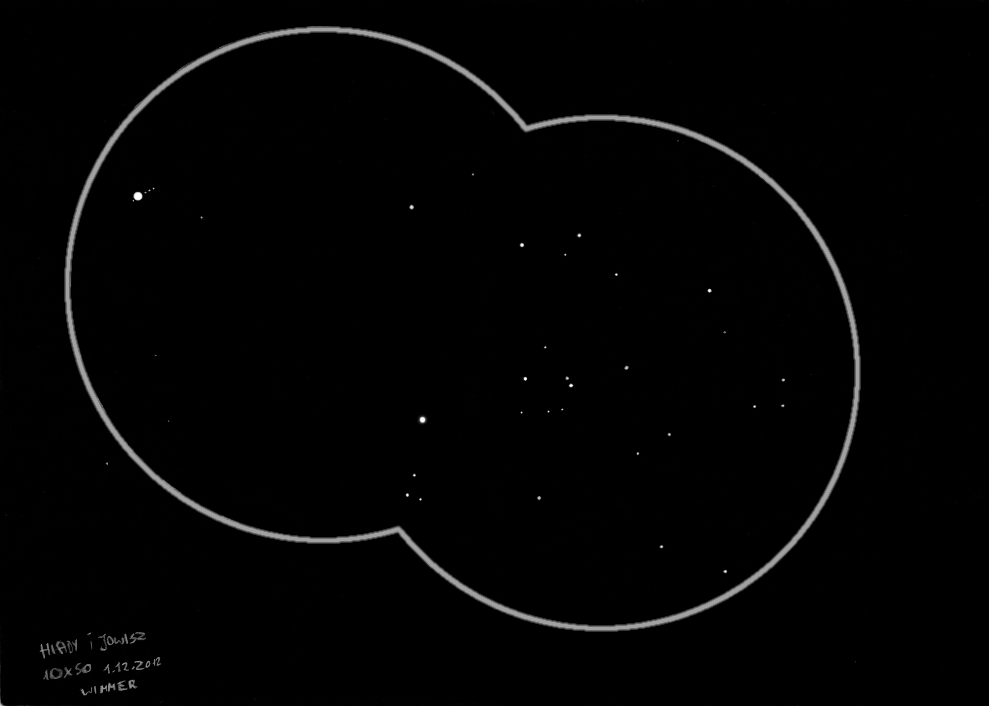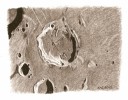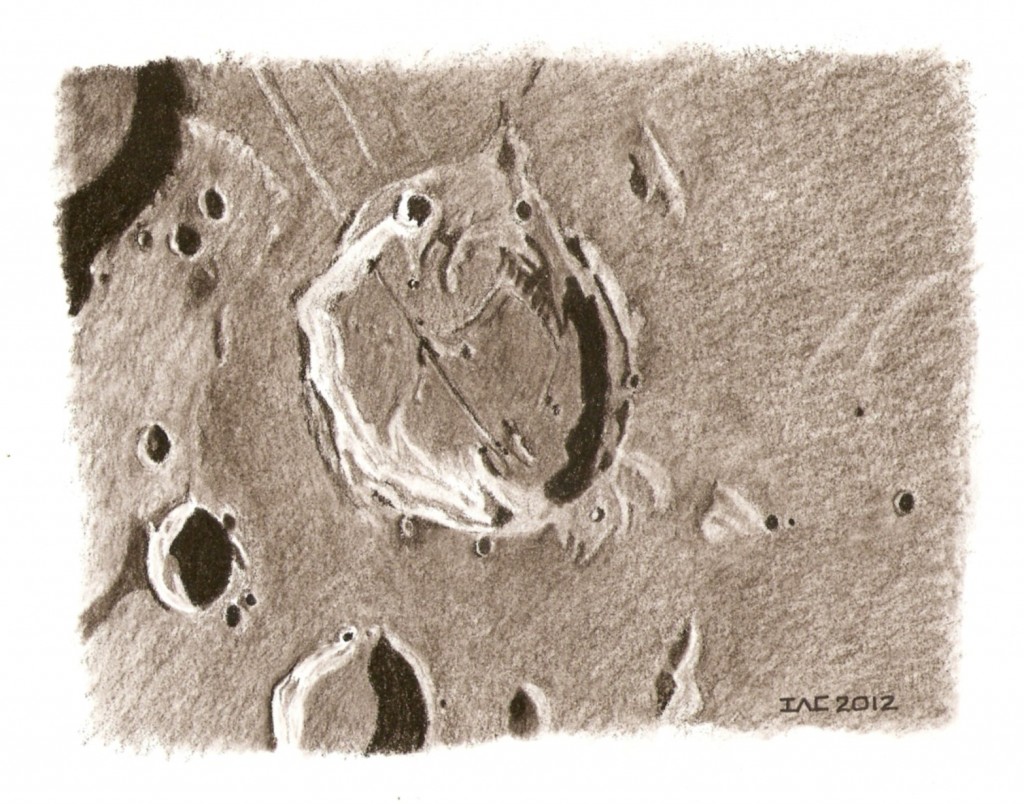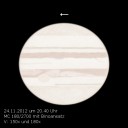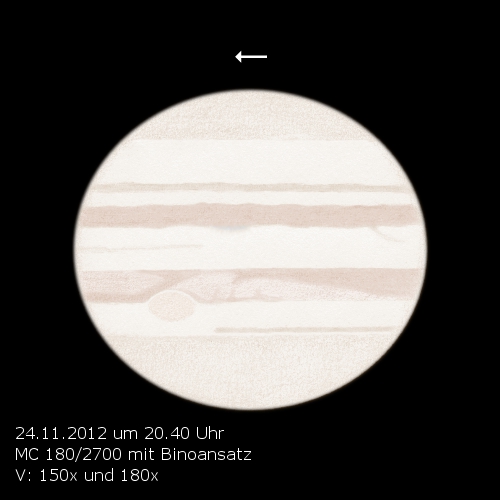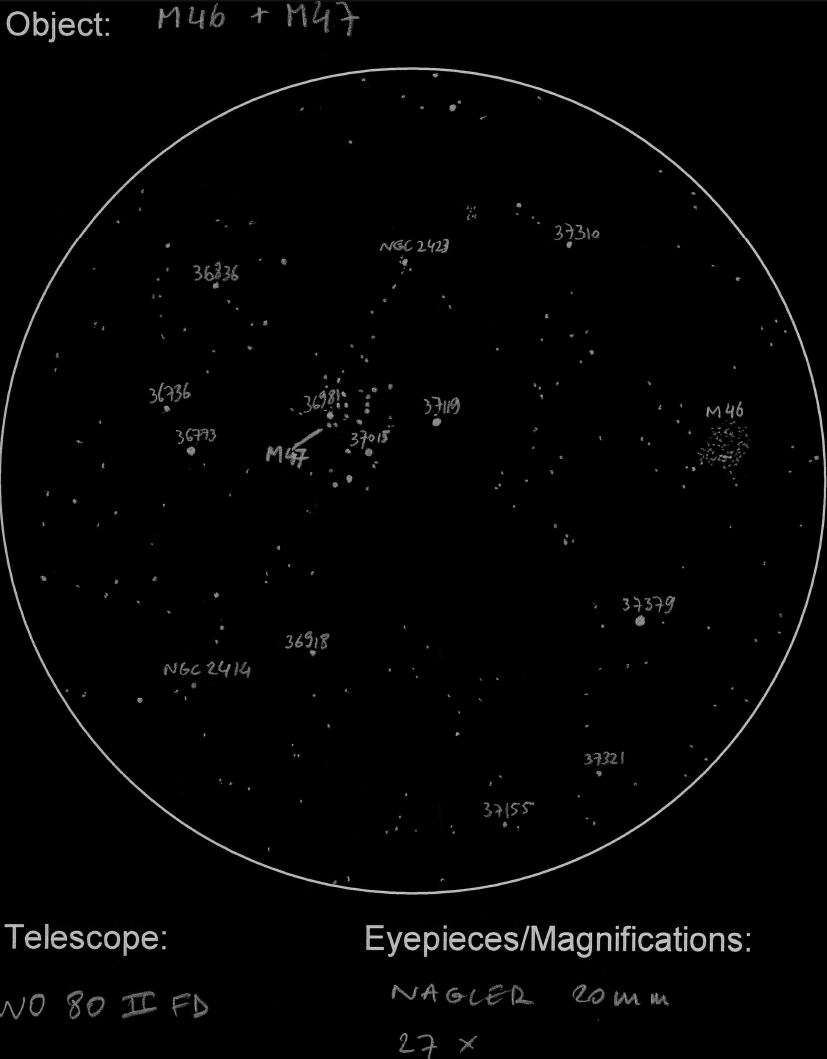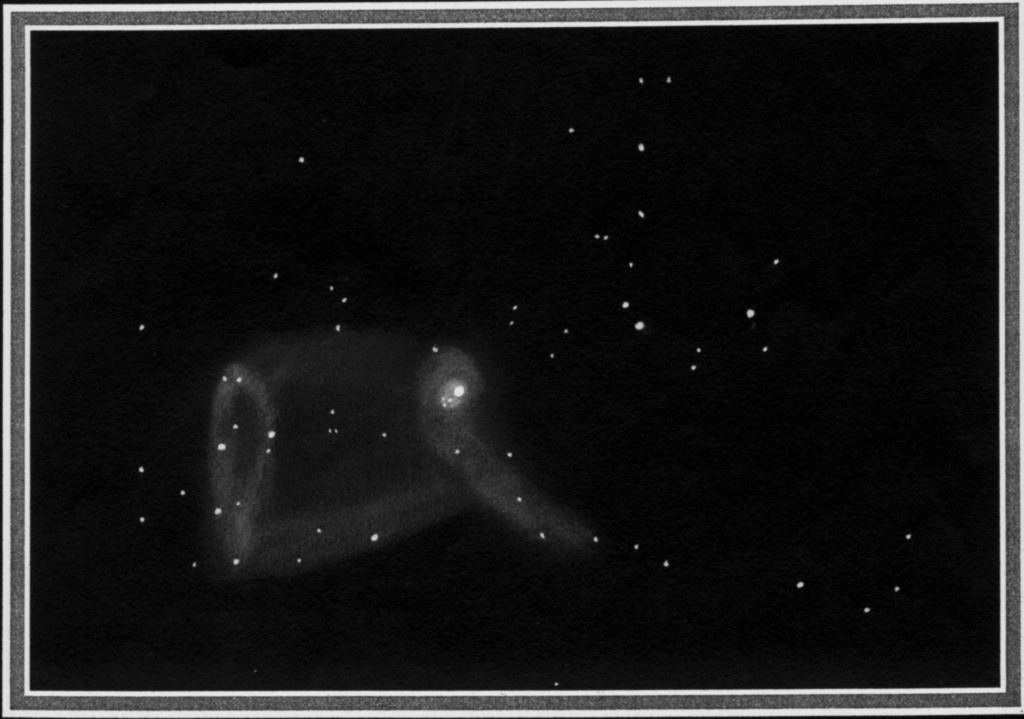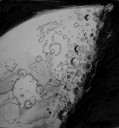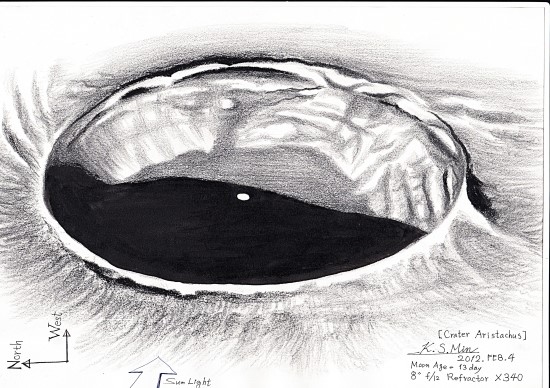
This 40 km diameter bright crater is always clearlly seen with a small telescope.
The inner surface of this crater looks like as to be painted with some dense bright white material .
Last winter , I observed / sketched this crater using my trusty 8 inches refractor at x340 .
While I was observing, the zet- black shadow of eastern rim more and more covered the flat bottom surface until the small round central peak only remaind,. …. that was impressive .
——-
8 inches refractor x340
2012. feb. 4th
Crater name; Aristachus
seeing; mediocre, not good
Location; at Backyard home in South korea
Media; white paper, graphite pencils

